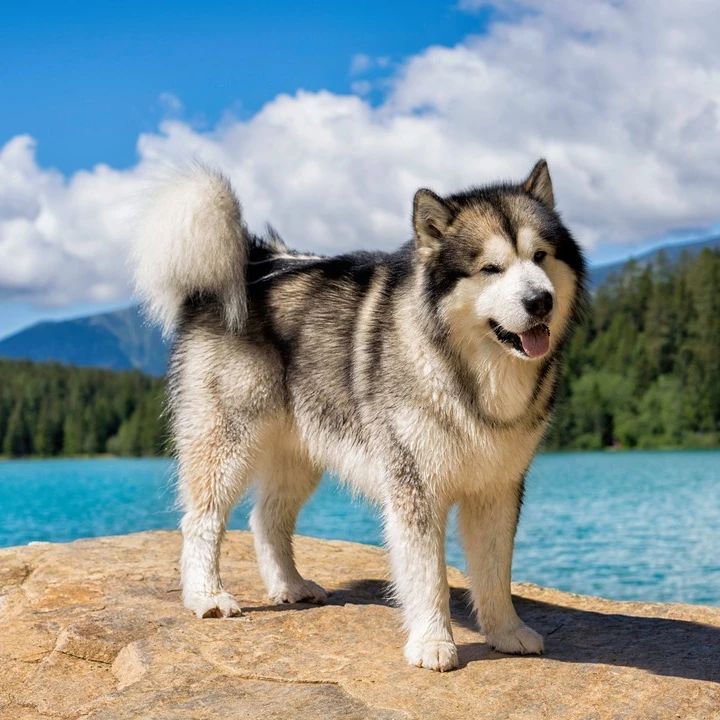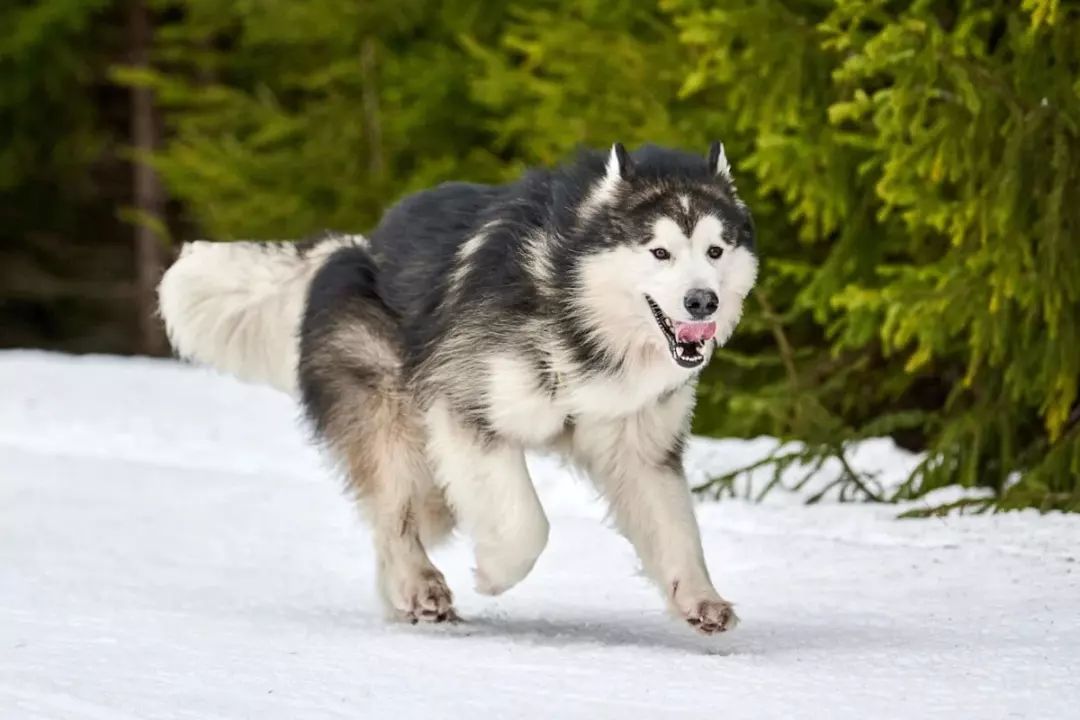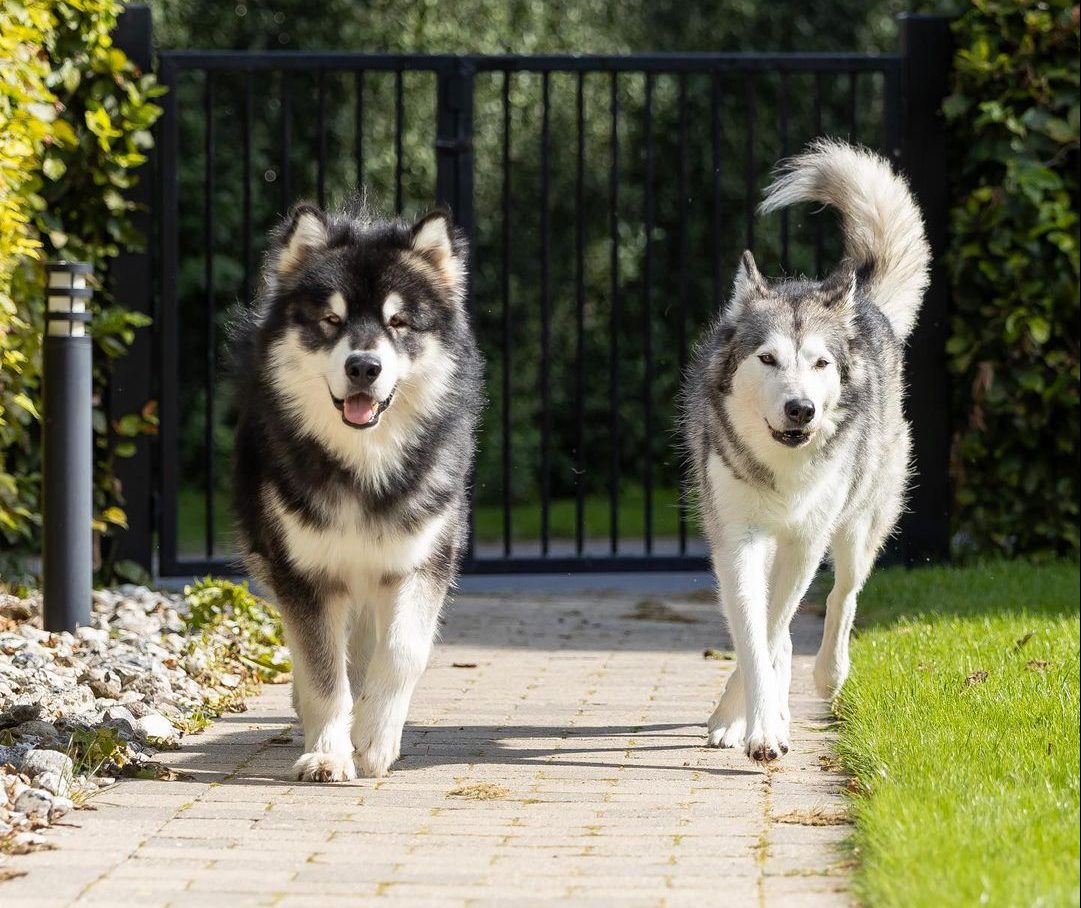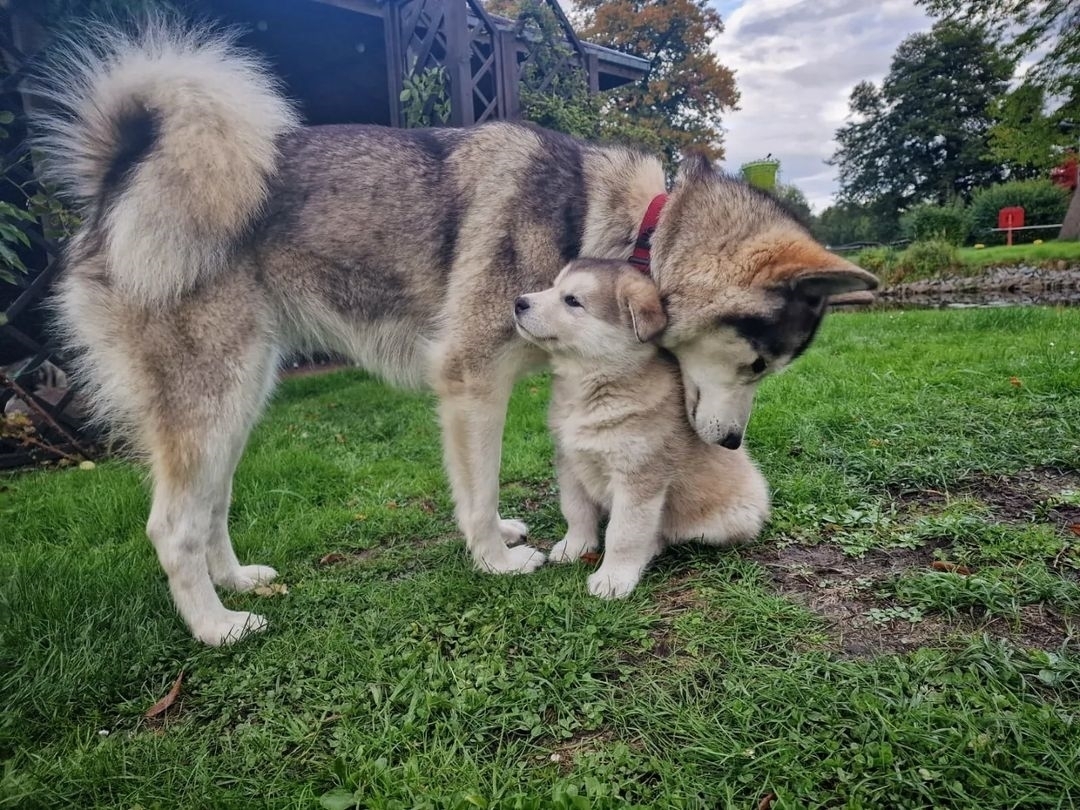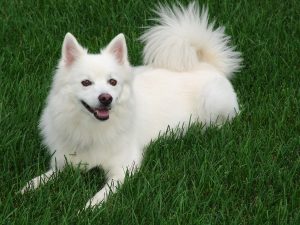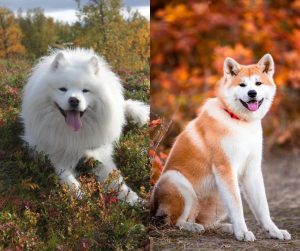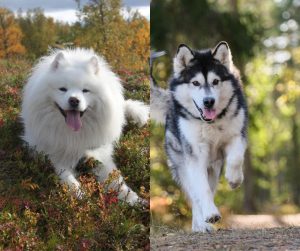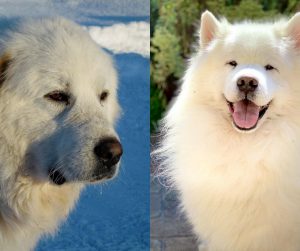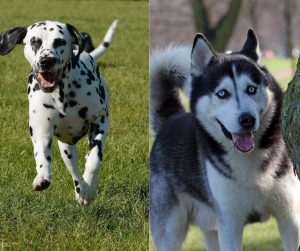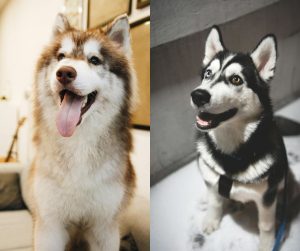At first glance, most people will not make the difference between a Siberian Husky and an Alaskan Malamute. Most people might think that the Malamute is just a bigger, probably more obese Husky. But that is not the reality we live in. You may ask whether is Alaskan Malamute a Husky. But the reality is they are two different, distinct sled dog breeds.
The similarity is both were bred for pulling sleds in the snow and arctic climates. That is where the similarities end, and the differences begin.
Differences At A Glance
| Alaskan Malamute | Siberian Husky | |
| weight | 70 to 100 pounds | 30 to 60 pounds |
| height | 23 to 25 inches | 23 to 25 inches |
| color | Gray and white | Black and white |
| coat | Long fluffier fur | Medium length fur |
| origin | Alaska | Siberia |
| eyes | Only brown color accepted | Brown and blue |
| ears | Pointed forward and on the side of the head | Pointed upward on top of the head |
Sharing The Same History
As we said before, these two dog breeds originated in climates of extreme and unforgiving cold. But while one comes from Alaska, the other comes from Siberia. Hence, the Siberian and Alaskan in their names.
Both were bred by the native people as a mode of transportation to follow the scarce food source. For example, the Siberian Husky was required to do day after day on very little food, and every aspect of the dog is about being exceptionally efficient. The Malamute was essential for the survival of the Mahlemut tribe.
Similar to the Siberian Husky, this dog worked hard in brutal climates, often on starvation diets. They lived as part of the family but were also part of the hunting crew. Malamutes also carried packs and pulled sleds.
We have to say that during the gold rush in Alaska, the Malamute was nearly lost. The need for working dogs increased, and to meet the demand, people often bred outside breeds with the native dogs. Yet, the dogs of the Mahlemut tribe saved the day.
The remote area where the tribe lived allowed the Malamute lineage to remain relatively pure. These dogs laid the foundation for the Alaskan Malamute.
Is The Alaskan Malamute Recognized By The AKC?
We mentioned previously that the Alaskan Malamute and Siberian Husky are two distinct breeds. Their recognition by the American Kennel Club proves it as well. For a dog breed to become AKC recognized, there must be a minimum number of dogs geographically distributed throughout the US and an established breed club of responsible owners and breeders.
The Siberian Husky is recognized as one of the top 15 most popular breeds in the United States. The Malamute is further down the line, between the 50 and 60 most popular breeds.
There is also the Alaskan Husky. Yet, this breed originating from Alaska is not recognized by the American Kennel Club. The Alaskan Husky resembles the Siberian one, but it is usually taller.
The Alaskan Malamute is an officially recognized dog breed by the AKC. So, you cannot ask whether an Alaskan Malamute is a Husky. These two are different and unique breeds. Yes, they are both part of the working dog group. Similar to Huskies, they were trained as racing sled dogs.
Spotting The Differences In Appearance
Let’s talk about the differences in appearance between these two breeds.
- The Alaskan Malamute dog breed is much larger compared to its Siberian counterpart. They can grow up to 100 pounds, unlike the Siberian Husky which tops 60 pounds
- Malamutes have longer fur and are much fluffier. Yes, their fur comes in the same color, but Huskies have a white mask on the face, while Malamutes have a white cap on their head
- Malamutes always have brown eyes, while Huskies are acceptable with blue eyes or have one blue eye and one brown eye. Malamutes with anything else than brown eye color are disqualified by the AKC
- The next obvious difference is Malamutes have ears that point forward, while Huskies have ears that are on top of the head and point straight up
- Malamutes come in a variety of colors, but are rarely just one solid color. They almost always have one color additional one to white, for example, sable and white, black and white, red and white, or gray and white
- This one is more obvious in adult dogs. But Huskies have their color fade as they age. An adult Siberian Husky breed has a coat that looks like one solid color because the canine has lost pigmentation in the fur. Malamutes, on the other hand, keep their dual coloration as they age
- If you see them side-by-side, you can easily notice the longer legs of the Siberian Husky and the broader chest of the Malamute
- Huskies have a narrow face, while Malamutes do not
- Malamutes have tails that are curled, while Huskies have tails shaped like a brush
Are There Differences In Temperament?
This is where you will find similarities between an Alaskan Malamute and a Siberian Husky. Both are independent thinkers, yet, with proper socialization and positive reinforcement, you can solve most issues.
What you have to remember is patience. Dog owners of these two dogs have to be patient and have a sense of humor. Otherwise, you will get frustrated every day.
Another similarity is they are friendly even with people they do not know. Malamutes, however, are a bit more wary of dogs they do not know, especially if they are of the same sex.
They are both pack animals, making them loyal and loving. At the same time, they enjoy their alone time. Huskies are more prone to separation anxiety. Malamutes, can handle being the only pet and alone at home better.
How To Adopt One?
So, are you thinking of getting an Alaskan malamute dog as your next pet? If you want to rescue one, make sure to contact the Alaskan Malamute Club of America or the Siberian Husky Club of America. They are breed-specific rescue clubs.
You can also look for the online marketplace of breeders. Make sure to ask specific questions about the host, treatment of the dog, parents, and so on.

